A week in the shop
Published 9 Jun 2019
Not a hugely productive week, as I was blocked waiting for some new kit to arrive (see below), so I paused guitar building for the most part and focussed on other things. However, I did get some bits done, so let’s take a look.
I took another crack at the setup for the Recovery Offset guitar, which is now playing pretty good.
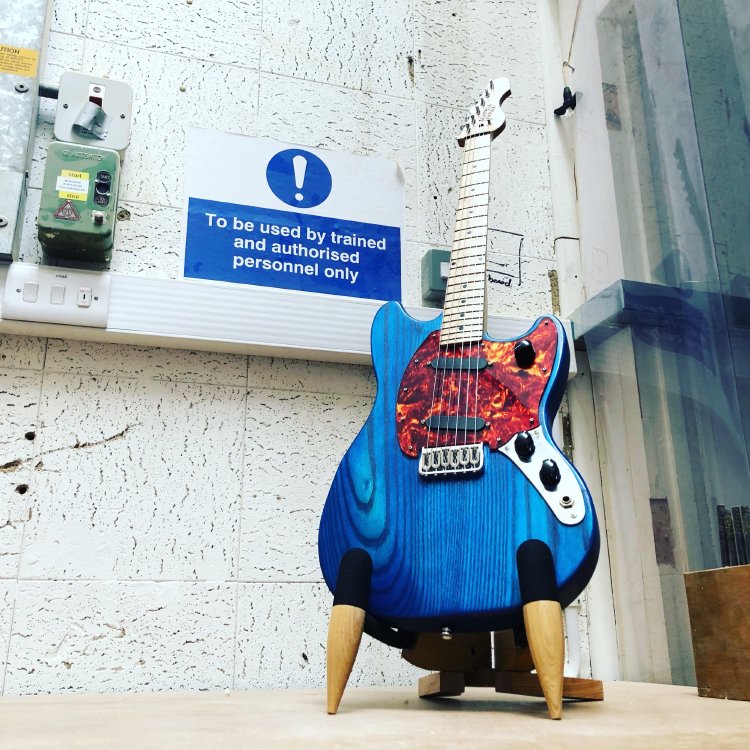
I tweaked the nut a bit and got the intonation just right by tweaking the bridge setup. I’ve had a couple of people stop by to see it and the general reception has been good, from people who I trust to tell me if it was rubbish. This is good, as I tend to be always focussed on how I could have done something better, so it’s nice to get external feedback on both the good and the bad points.
All that really remains for this guitar is for me to take some pics and do a quick demo video and then get it up on reverb for sale! If you’d like to see it then just drop me a line.
I had a friend from a previous part of my career stop by this week to see where I built the guitars and to try some out: I suspect like a lot of people he was bemused that this computer geek had suddenly started making things in the real world :)
It was lovely to catch up with Nick, and it was interesting to see what bits of the guitars I had to hand at the time he liked and didn’t like. For example, Nick’s mostly played Fender Strats, and so whilst he liked the Recovery Offset shown above, the moment I gave him a t-style to play (which has the same 25.5” scale length as a strat, as opposed to the shorter 24” scale length of the offset) he clearly was more at home. This was despite that older t-style being in to have it’s neck replaced as I’m not happy with the build quality compared to what I can do today.
The one thing Nick’s visit did make me aware of is that I need a better amp stashed at Makespace for demos when people visit. An electric guitar is useless unless it can be heard, and whilst I have my little Blackstar Fly as a workbench amp to let me test, it doesn’t let you hear a guitar properly sing. Also, I’m getting to the stage where I have several guitars built that I can demo, so I might try making an appearance at guitar shows in the near future, and I’ll need an amp to use at those.
Picking an amp for this set of use cases is a little tricky, as it’s not like buying an amp for me, where I have a sound I like and that’s all it needs to do. Indeed, this is why the amp I made for myself isn’t a good demo amp, as it won’t be to everyone’s tastes. Instead I need an amp that can do a wide range of voices to cater to the many tastes of players who might try my guitars. Obviously lots of cheaper solid state amps will do modelling, however I want a amp that will be of a quality/fidelity that a gigging musician might be familiar with so they can hear the instrument at its best; the amp has to show off the guitars as it is effectively part of my sales process. Finally it has to cope with the fact that different venues where I’ll demo (guitar shows where you’re up against other stalls, Makespace where it’s less noisy and I have less room to make noise, and there’s some shows where it’s headphones only but you still need something to drive the headphones.
I spent a day doing a bunch of research into amps that might fit all those spots, and before I could kick the tyres any more I spotted a bargain on one of the options I was looking at, the Blackstar HT-20R, and decided that given how hectic my time is right now and it was a bargain from a reputable store, I just pulled the trigger and hope it’ll do all that I need. On paper it seems good, but obviously only the ears will tell!
As mentioned last week, we ordered a Metabo DH330 planer thicknesser for Makespace, and that arrived this week. As I’ve said before, I think in any workshop where you get in raw timber and are not just cutting wood from panels of ply or MDF then a thicknesser is an essential bit of kit. I had worried that this was just my opinion, but feedback has been very positive in Makespace at the news of the thicknesser’s arrival. It’s good to know a lot of people will get to use this addition to Makespace beyond myself!
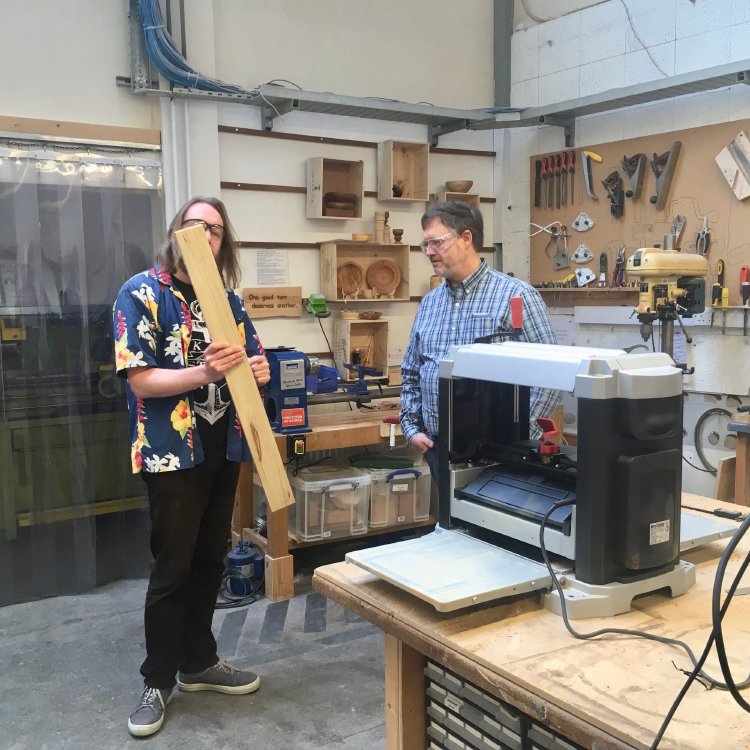
We spend some time setting up the Metabo, in particular tweaking the shelves that support the wood as it enters and exits the machine to try reduce the snipe (overcut) you get as the wood enters and exits the cutting area. We managed to get it pretty low, but not totally eliminated. The general opinion on the Internet is that with fettling it is possible so we’ll take another pass at it soon, but as it is right now it’s pretty usable.
My next steps for this are to do the risk assessment for Makespace and then come up with a training plan so we can get other members certified to use it.
With the thicknesser installed at the end of the week I didn’t get much chance to use it, but it did let me get a few bits of wood processed, and I ended the week by getting the cigar box guitar properly started. The aim of this project is to build something by hand, rather than using either the CNC Router or templates using the hand router. I’m trying to break away from my fear of doing things slightly more freehand, which is an essential skill in woodworking, as the wood will often throw you a curve ball than you need to deal with, no matter how well planed your initial steps.
To this end, having thicknessed a bit of wood for the neck, I then sketched out the profile of the cigar box on the wood, and took it to the bandsaw for rough shaping. If you look closely you can see the pencil marks on the wood I drew by hand as to where I needed to cut.
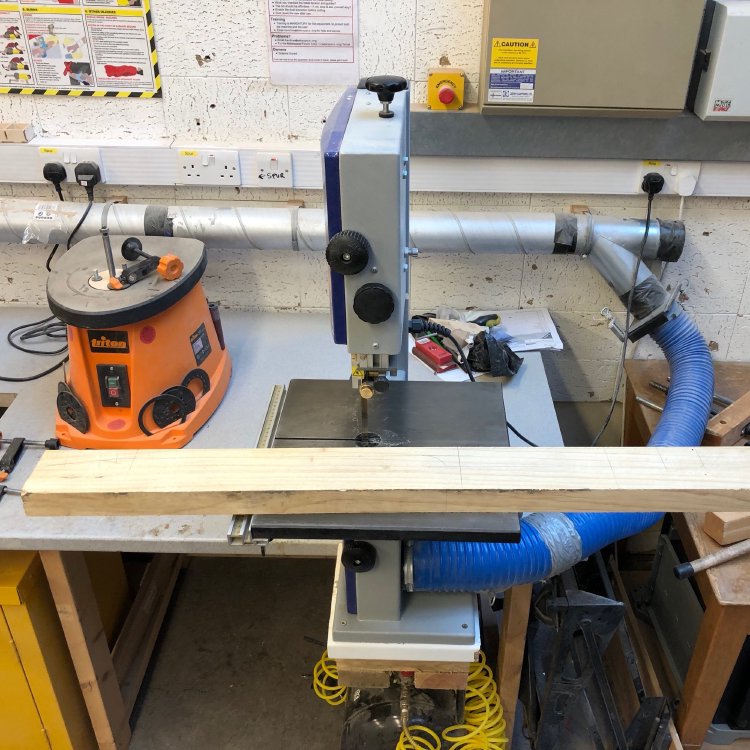
As I noted a couple of weeks ago, in the past I tended to view the bandsaw as a crude instrument, but when it has a nice sharp blade on it it’s actually a fairly precise instrument, so I was able to get quite close to all the lines I needed. After about ten minutes and a lot of dust later, I had the neck roughed out. Due to the small thought on the current Makespace bandsaw I couldn’t make all the cuts I wanted, but I got close enough and then used a chisel to get the last bits done.
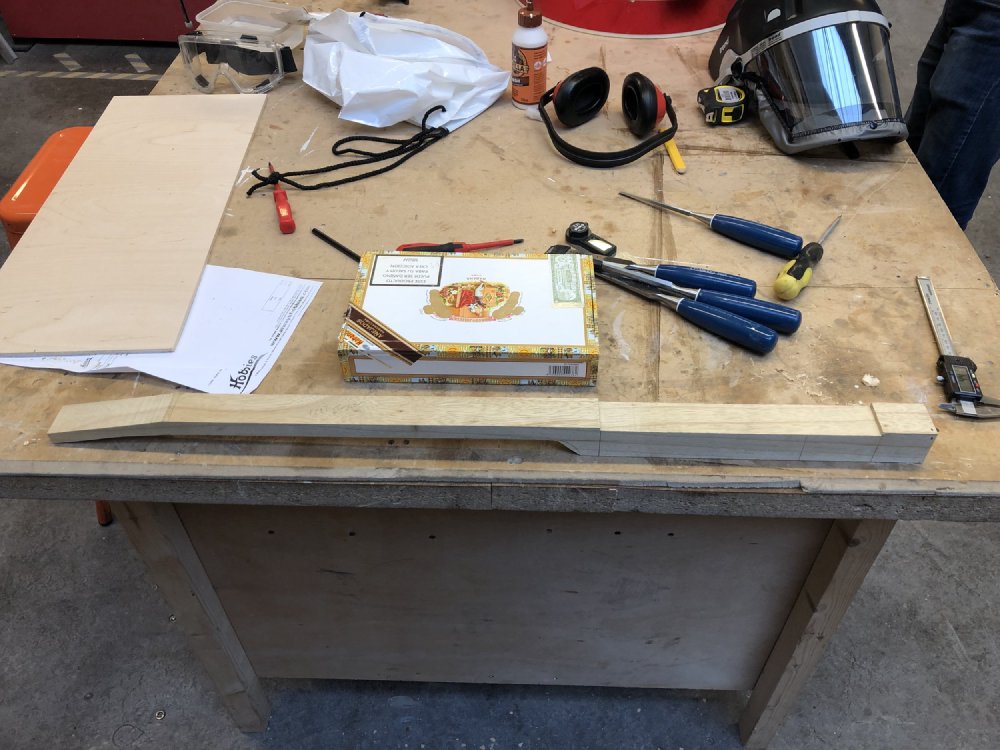
Neck roughed out, I then needed to cut slots into the cigar box to let me mount the neck. For this I broke out my Japanese pull saw that I normally use for cutting fret slots. The sides of the cigar box are not that thick and are not made from the most rigid of woods, so I wanted a nice sharp blade for this that I knew wouldn’t pull unnecessarily on the box.
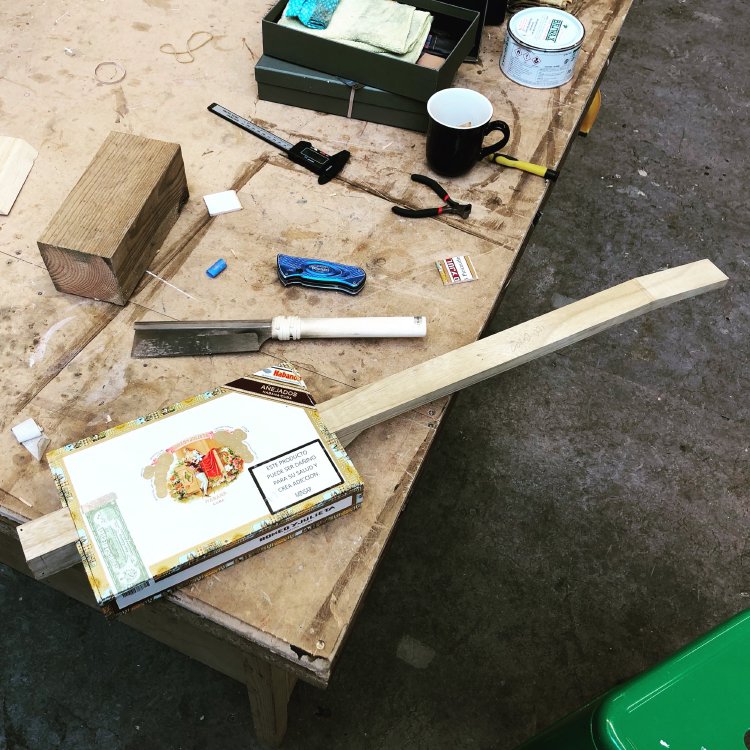
The other bit I did was take some offcuts from the neck and shape those to glue on to the headstock as wings to give me more room for the tuners to fit. Unfortunately someone else had got started on gluing their furniture job before I reached this stage, so all the G-clamps of the right size were in use, so that was it for this week. However, a good start. Next up will be making the fretboard.
The one other thing I did this week was be part of the Makespace team attending an event at the Institute for Manufacturing at Cambridge University. The IfM are one of the key sponsors of Makespace, which is why we had a stand there, and we had a good range of things built at Makespace on display. I took along one of the guitars and the amp I made, and in general it was both amusing and satisfying to see the looks of amazement that products so well finished can be achieved in a community workshop.
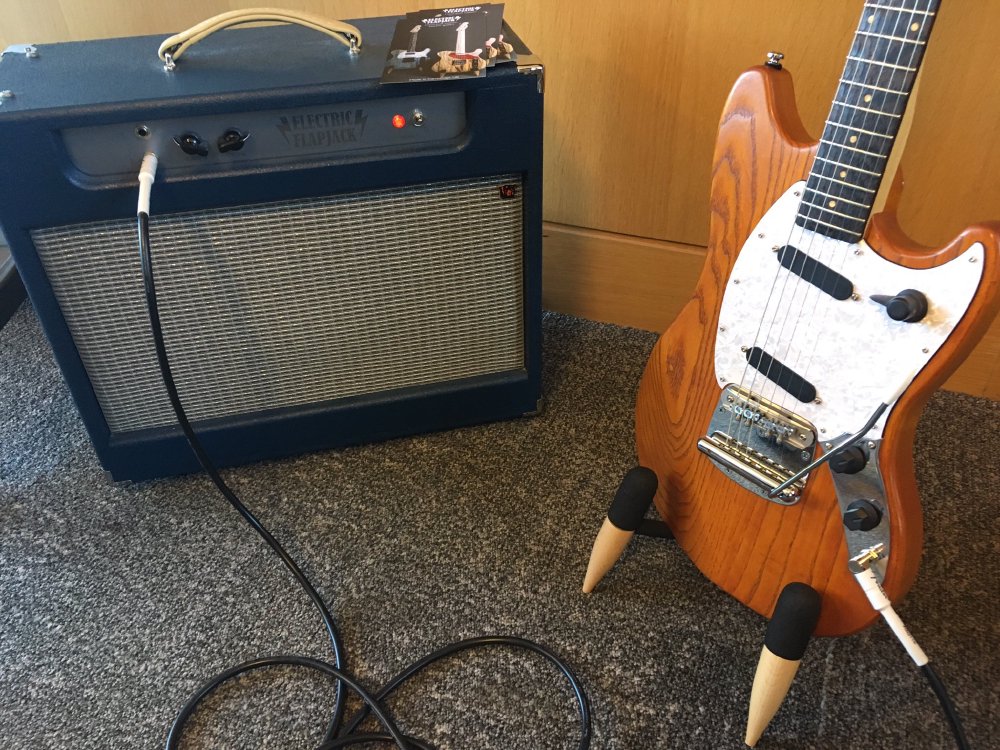
And that’s not just me - on display was a clock that Graeme built and the laser etched maps that Jonathan is making on oak now, the output of Makespace is at an all time high, and it’s nice to be part of that wave where we all inspire each other to do better things.